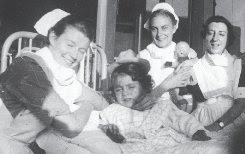In the past week, we have introduced the 7 courageous men and women featured in our latest exhibit Fighting for Democracy: Who is the "We" in "We the People"? which opens today.
Each story, compelling and fascinating in its own right, shines a light on how American democracy is a living, breathing thing that every citizen has a right and responsibility to improve upon as we strive to build "a more perfect union."
The sacrifice of the individuals profiled in Fighting for Democracy is only part of a much larger story.
The exhibit, which runs through July 14, 2013, will empower us all to look into
what makes a democracy work?
what makes a democracy work?
Is it its principles? Its people? Their vision for it? Or something much more?
Fittingly, this weekend we'll also be hosting our annual Martin Luther King Jr. Community Days on Sunday, Jan. 20 and Monday, Jan. 21. Admission to the museum will be free as we celebrate Dr. King's vision for America--shared by millions and fought for by millions more--with performances, documentaries, workshops and crafts for families. Dr. King has much in common with the 7 servicemen and women we've spent the week following.
Thank you for tweeting and sharing your thoughts with us as we've started to tell their provocative stories.
Thank you for tweeting and sharing your thoughts with us as we've started to tell their provocative stories.
Continue to connect with us and let us know how you respond to the questions surrounding democracy by posting on Facebook www.facebook.com/LevineMuseum or
Twitter @LevineMuseum.
Twitter @LevineMuseum.
Don't forget to use the hashtag #Fight4Dem.
What commitment have you made to improving these United States?








.jpg)

.jpg)



